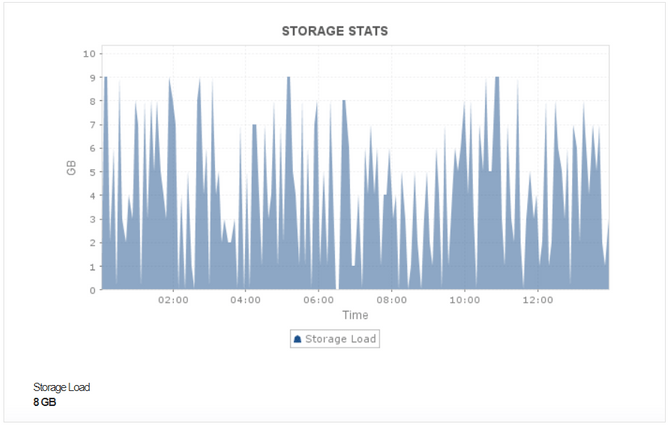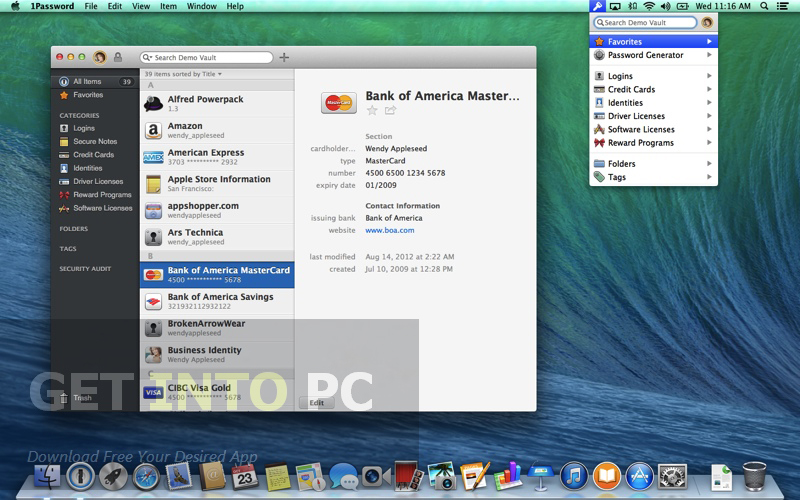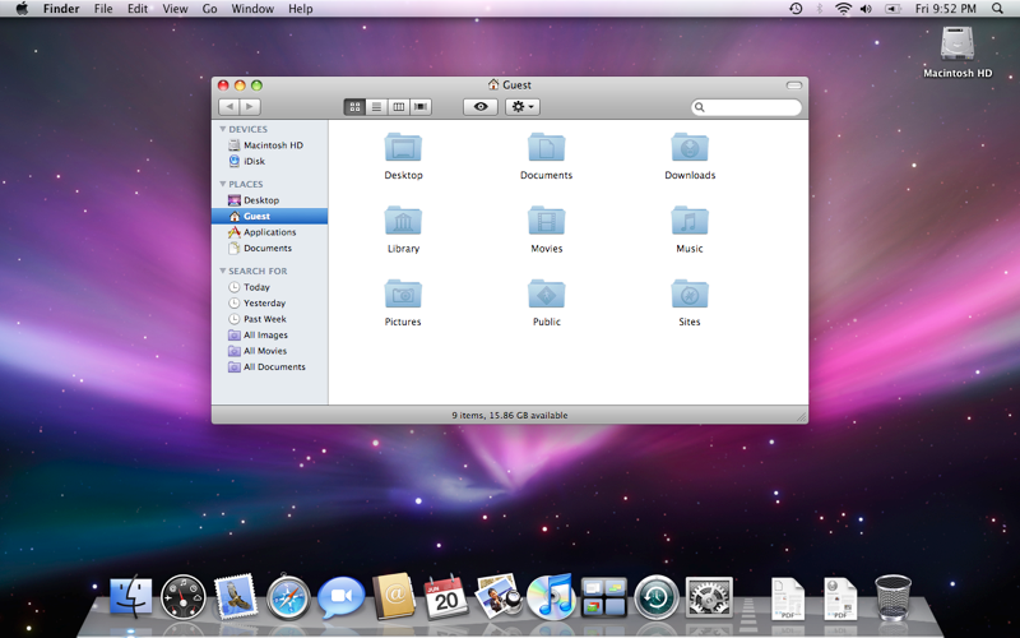- Download Mac Os Sierra
- Cassandra Download Mac Os 10.13
- Download Mac Os 10.12
- Cassandra Download Mac Os 10.10
- Cassandra Download Mac Os High Sierra
- Download Mac
These advanced steps are primarily for system administrators and others who are familiar with the command line. You don't need a bootable installer to upgrade macOS or reinstall macOS, but it can be useful when you want to install on multiple computers without downloading the installer each time.
Mac OS; Eclipse IDE; Maven; Command; How to install Cassandra on MacOS. June 9, 2015 May 23, 2016 Laxmi NoSQL, Terminal. 1) Download the Apache Cassandra from the.
- Feb 15, 2018 Here is a simple, straightforward guide to start Cassandra on your local machine. Also we will create a sample keyspace as well as add data to our database. Now that you have Cassandra running.
- Installing Cassandra on Mac OS X Install Homebrew. Homebrew is a great little package manager for OS X. If you haven't already, installing it is pretty easy.
- DataStax DevCenter is an intuitive application designed to help Apache Cassandra and DataStax Enterprise developers or administrators execute CQL queries and commands. It provides a visual explorer that allows users to navigate and interact with database items, as well as wizards that streamline various management operations.
Download macOS
Find the appropriate download link in the upgrade instructions for each macOS version:
macOS Catalina, macOS Mojave, ormacOS High Sierra
Installers for each of these macOS versions download directly to your Applications folder as an app named Install macOS Catalina, Install macOS Mojave, or Install macOS High Sierra. If the installer opens after downloading, quit it without continuing installation. Important: To get the correct installer, download from a Mac that is using macOS Sierra 10.12.5 or later, or El Capitan 10.11.6. Enterprise administrators, please download from Apple, not a locally hosted software-update server.

OS X El Capitan
El Capitan downloads as a disk image. On a Mac that is compatible with El Capitan, open the disk image and run the installer within, named InstallMacOSX.pkg. It installs an app named Install OS X El Capitan into your Applications folder. You will create the bootable installer from this app, not from the disk image or .pkg installer.
Use the 'createinstallmedia' command in Terminal
- Connect the USB flash drive or other volume that you're using for the bootable installer. Make sure that it has at least 12GB of available storage and is formatted as Mac OS Extended.
- Open Terminal, which is in the Utilities folder of your Applications folder.
- Type or paste one of the following commands in Terminal. These assume that the installer is still in your Applications folder, and MyVolume is the name of the USB flash drive or other volume you're using. If it has a different name, replace
MyVolumein these commands with the name of your volume.
Catalina:*
Mojave:*
High Sierra:*
El Capitan: - Press Return after typing the command.
- When prompted, type your administrator password and press Return again. Terminal doesn't show any characters as you type your password.
- When prompted, type
Yto confirm that you want to erase the volume, then press Return. Terminal shows the progress as the bootable installer is created. - When Terminal says that it's done, the volume will have the same name as the installer you downloaded, such as Install macOS Catalina. You can now quit Terminal and eject the volume.
Download Mac Os Sierra
* If your Mac is using macOS Sierra or earlier, include the --applicationpath argument, similar to the way this argument is used in the command for El Capitan.
Use the bootable installer
After creating the bootable installer, follow these steps to use it:
Can I install Office 2016 for Mac and Office for Mac 2011 on the same computer? Yes, you can install and use Office 2016 for Mac and Office for Mac 2011 at the same time. However, we recommend that you uninstall Office for Mac 2011 before you install the new version just to prevent any confusion. Microsoft has put out the free download of Office 2016 for Mac public preview, without any Office 365 subscription required. The new software includes support for Retina displays, iCloud syncing, and looks like the versions of Office currently available on Windows. Start quickly with the most recent versions of Word, Excel, PowerPoint, Outlook, OneNote and OneDrive —combining the familiarity of Office and the unique Mac features you love. Work online or offline, on your own or with others in real time—whatever works for what you're doing. Once you verify you have a license, anytime you need to install or reinstall Office you can go straight to the section below, Sign in to download Office and select the tab for steps to install on a PC or Mac. You'll sign in with your work or school account for these versions of Office.

- Plug the bootable installer into a compatible Mac.
- Use Startup Manager or Startup Disk preferences to select the bootable installer as the startup disk, then start up from it. Your Mac will start up to macOS Recovery.
Learn about selecting a startup disk, including what to do if your Mac doesn't start up from it. - Choose your language, if prompted.
- A bootable installer doesn't download macOS from the Internet, but it does require the Internet to get information specific to your Mac model, such as firmware updates. If you need to connect to a Wi-Fi network, use the Wi-Fi menu in the menu bar.
- Select Install macOS (or Install OS X) from the Utilities window, then click Continue and follow the onscreen instructions.
Learn more
For more information about the createinstallmedia command and the arguments that you can use with it, make sure that the macOS installer is in your Applications folder, then enter this path in Terminal:
Catalina:
Mojave:
High Sierra:
El Capitan:
Skip to end of metadataGo to start of metadataWhat is Cassandra
Cassandra is a high-availability/high performance/no single point of failure data storage system that can look a lot like SQL - or NoSQL. DataStax, supplies an enterprise ready version of Cassandra called DataStax Enterprise.
Planet Cassandra calls it an 'always on' architecture and has a good description: of What is Cassandra. http://www.planetcassandra.org/what-is-apache-cassandra/
Trying Out Cassandra
Planet Cassandra also provides a Try Cassandra page (http://www.planetcassandra.org/try-cassandra/) that enables developers to try out Cassandra before even installing it. On this page, the user can check out Casandra's SQL-like capabilities': set up a keyspace, create a table, insert some rows, update rows, and do selects on the table.
Download and Installation Options
The Apache version and DataStax Community versions are approximately the same thing. DataStax provides instructions for the community edition and some getting started pages for Windows: There is also a DataStax Enterprise version described here.
Cassandra relies on Java 8 to run, and Python 2.7 to be able to use CQL. DataStax Enterprise runs on either Mac or Linux - not Windows. It comes with tools and features that readily enable set up and usage of Cassandra in a production environment. DataStax Community version runs on all three: Windows, Mac, or Linux. You can download:
- The Apache version here: http://cassandra.apache.org/download/
- The DataStax Community here: http://planetcassandra.org/cassandra/
- The DataStax Enterprise version (time limited) here: https://academy.datastax.com/downloads
To install,
For Linux, the untar the distribution.
For Windows there is a Windows installer. See: http://docs.datastax.com/en/cassandra_win/3.x/cassandra/install/installWin.html and Getting started with Apache Cassandra on Windows the easy way.
For Mac: http://www.datastax.com/2012/01/working-with-apache-cassandra-on-mac-os-x
Startup

The bin directory contains a file called cassandra. From the top-level directory for the distribution, run:
$ bin/cassandra
Using Cassandra
Also from the top-level directory:
$ python bin/cqlsh.py
Connected to Test Cluster at 127.0.0.1:9042.
[cqlsh 5.0.1 | Cassandra 3.3.0 | CQL spec 3.4.0 | Native protocol v4]
Use HELP for help.
cqlsh> create keyspace hr with replication={'class':'SimpleStrategy', 'replication_factor':1};
cqlsh> use hr;
Cassandra Download Mac Os 10.13
cqlsh:hr> create table test (id int primary key, first varchar, last varchar, dept varchar);
cqlsh:hr> insert into test(id,first, last, dept) values (1,'joe','smudley','HR');

OS X El Capitan
El Capitan downloads as a disk image. On a Mac that is compatible with El Capitan, open the disk image and run the installer within, named InstallMacOSX.pkg. It installs an app named Install OS X El Capitan into your Applications folder. You will create the bootable installer from this app, not from the disk image or .pkg installer.
Use the 'createinstallmedia' command in Terminal
- Connect the USB flash drive or other volume that you're using for the bootable installer. Make sure that it has at least 12GB of available storage and is formatted as Mac OS Extended.
- Open Terminal, which is in the Utilities folder of your Applications folder.
- Type or paste one of the following commands in Terminal. These assume that the installer is still in your Applications folder, and MyVolume is the name of the USB flash drive or other volume you're using. If it has a different name, replace
MyVolumein these commands with the name of your volume.
Catalina:*
Mojave:*
High Sierra:*
El Capitan: - Press Return after typing the command.
- When prompted, type your administrator password and press Return again. Terminal doesn't show any characters as you type your password.
- When prompted, type
Yto confirm that you want to erase the volume, then press Return. Terminal shows the progress as the bootable installer is created. - When Terminal says that it's done, the volume will have the same name as the installer you downloaded, such as Install macOS Catalina. You can now quit Terminal and eject the volume.
Download Mac Os Sierra
* If your Mac is using macOS Sierra or earlier, include the --applicationpath argument, similar to the way this argument is used in the command for El Capitan.
Use the bootable installer
After creating the bootable installer, follow these steps to use it:
Can I install Office 2016 for Mac and Office for Mac 2011 on the same computer? Yes, you can install and use Office 2016 for Mac and Office for Mac 2011 at the same time. However, we recommend that you uninstall Office for Mac 2011 before you install the new version just to prevent any confusion. Microsoft has put out the free download of Office 2016 for Mac public preview, without any Office 365 subscription required. The new software includes support for Retina displays, iCloud syncing, and looks like the versions of Office currently available on Windows. Start quickly with the most recent versions of Word, Excel, PowerPoint, Outlook, OneNote and OneDrive —combining the familiarity of Office and the unique Mac features you love. Work online or offline, on your own or with others in real time—whatever works for what you're doing. Once you verify you have a license, anytime you need to install or reinstall Office you can go straight to the section below, Sign in to download Office and select the tab for steps to install on a PC or Mac. You'll sign in with your work or school account for these versions of Office.
- Plug the bootable installer into a compatible Mac.
- Use Startup Manager or Startup Disk preferences to select the bootable installer as the startup disk, then start up from it. Your Mac will start up to macOS Recovery.
Learn about selecting a startup disk, including what to do if your Mac doesn't start up from it. - Choose your language, if prompted.
- A bootable installer doesn't download macOS from the Internet, but it does require the Internet to get information specific to your Mac model, such as firmware updates. If you need to connect to a Wi-Fi network, use the Wi-Fi menu in the menu bar.
- Select Install macOS (or Install OS X) from the Utilities window, then click Continue and follow the onscreen instructions.
Learn more
For more information about the createinstallmedia command and the arguments that you can use with it, make sure that the macOS installer is in your Applications folder, then enter this path in Terminal:
Catalina:
Mojave:
High Sierra:
El Capitan:
Skip to end of metadataGo to start of metadataWhat is Cassandra
Cassandra is a high-availability/high performance/no single point of failure data storage system that can look a lot like SQL - or NoSQL. DataStax, supplies an enterprise ready version of Cassandra called DataStax Enterprise.
Planet Cassandra calls it an 'always on' architecture and has a good description: of What is Cassandra. http://www.planetcassandra.org/what-is-apache-cassandra/
Trying Out Cassandra
Planet Cassandra also provides a Try Cassandra page (http://www.planetcassandra.org/try-cassandra/) that enables developers to try out Cassandra before even installing it. On this page, the user can check out Casandra's SQL-like capabilities': set up a keyspace, create a table, insert some rows, update rows, and do selects on the table.
Download and Installation Options
The Apache version and DataStax Community versions are approximately the same thing. DataStax provides instructions for the community edition and some getting started pages for Windows: There is also a DataStax Enterprise version described here.
Cassandra relies on Java 8 to run, and Python 2.7 to be able to use CQL. DataStax Enterprise runs on either Mac or Linux - not Windows. It comes with tools and features that readily enable set up and usage of Cassandra in a production environment. DataStax Community version runs on all three: Windows, Mac, or Linux. You can download:
- The Apache version here: http://cassandra.apache.org/download/
- The DataStax Community here: http://planetcassandra.org/cassandra/
- The DataStax Enterprise version (time limited) here: https://academy.datastax.com/downloads
To install,
For Linux, the untar the distribution.
For Windows there is a Windows installer. See: http://docs.datastax.com/en/cassandra_win/3.x/cassandra/install/installWin.html and Getting started with Apache Cassandra on Windows the easy way.
For Mac: http://www.datastax.com/2012/01/working-with-apache-cassandra-on-mac-os-x
Startup
The bin directory contains a file called cassandra. From the top-level directory for the distribution, run:
$ bin/cassandra
Using Cassandra
Also from the top-level directory:
$ python bin/cqlsh.py
Connected to Test Cluster at 127.0.0.1:9042.
[cqlsh 5.0.1 | Cassandra 3.3.0 | CQL spec 3.4.0 | Native protocol v4]
Use HELP for help.
cqlsh> create keyspace hr with replication={'class':'SimpleStrategy', 'replication_factor':1};
cqlsh> use hr;
Cassandra Download Mac Os 10.13
cqlsh:hr> create table test (id int primary key, first varchar, last varchar, dept varchar);
cqlsh:hr> insert into test(id,first, last, dept) values (1,'joe','smudley','HR');
cqlsh:hr> select * from test;
id | dept | first | last
----+------+-------+---------
Download Mac Os 10.12
1 | HR | joe | smudley
Cassandra Download Mac Os 10.10
(1 rows)
Cassandra Download Mac Os High Sierra
cqlsh:hr>
